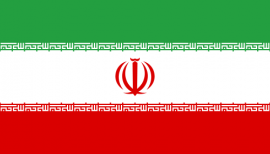 After the well publicised internet based attacks against Iran’s infrastructure, the continued difficulties with censorship, and the debated role of social media tools in 2009′s protests against President Mahmoud Ahamdinejad, Iran has been developing its own separate “internet” for launch next year.
After the well publicised internet based attacks against Iran’s infrastructure, the continued difficulties with censorship, and the debated role of social media tools in 2009′s protests against President Mahmoud Ahamdinejad, Iran has been developing its own separate “internet” for launch next year.
We first reported about Iran starting to create their own private internet, or more accurately an Iran-wide intranet, back last summer, but now sources inside Iran are now more openly talking about the project.
Iran, and its nuclear program, was the target of the Stuxnet virus that was discovered to have been created by the US and Israel, and the Iranian authorities are claiming that this Iranian intranet could be more secure and avoid similar issues in the future. This may be the case on some levels, but such carefully crafted viruses have always had to make the jump from an internet-connected device to a infrastructure-connected device to spread across the target network. As long as Iran does not completely shut itself off from the internet, therefore, Iran may well continue to be the target of such attacks in the future.
The more likely reason for developing this private network is censorship and control. Social media tools such as Twitter and Facebook certainly played a role in the protests against President Mahmoud Ahamdinejad in 2009, and even more so in the uprising in Egypt which overthrew the regime. By creating their own network, the Iranian authorities can control how people interact through that network on a much greater level. Currently, to get around the firewall in Iran – users only need to make use of cheap or free VPn software and service providers – this would be different on a private network where all nodes can be better tracked.
Most internet connections in Iran are through dial-up speeds, with increased speeds and network development hindered on a political level, and as such Iranians cannot view much streaming video on sites like YouTube and also see news reports from outside their own country. YouTube has also been banned in Iran due to the recent Innocence of Muslims film anyway. These low speeds, however, also hinder the development of digital trades and services, but with an Iranian intranet, these speeds could be increased and improve interior digital commerce without the threat of foreign news or culture affecting the Iranian population.
At the current stage of development “all governmental agencies and offices … have been connected to the national information network” according to deputy communications and technology minister Ali Hakim-Javadi as quoted by the Iranian Mehr news agency, with the second phase to connect the ordinary population to this network.
Whilst the Iranian authorities do have a reason to increase the digital protections as the US basically invited the beginning of a digital arms race by creating and launching Stuxnet, the creation of geo-limited networks like this will be a disappointment both to Iranians who will miss out on the progress of the rest of the world – in science, culture, and other areas shared over theweb, but also to the wider world. If this is the first step towards other notoriously censorship-heavy regimes creating mini-networks, then the great liberalising nature of the internet may hit a major hurdle.

